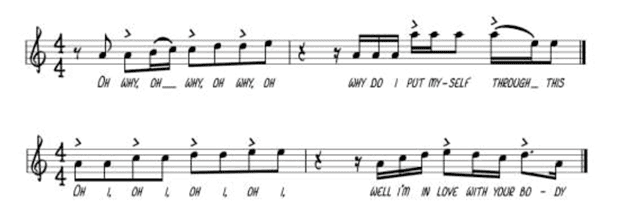
 Andrew Masson is an IPilogue writer and 1L JD candidate at Osgoode Hall Law School.
Andrew Masson is an IPilogue writer and 1L JD candidate at Osgoode Hall Law School.
After a four-year battle, Ed Sheeran has finally received vindication for copyright claims against his hit song “Shape of You”. It would be impossible to review all components of the 221-paragraph decision in this blog but, most importantly, Ed Sheeran’s artistic integrity was verified. One of the most salacious claims was that Ed Sheeran is a ‘Magpie’, defined as someone that habitually and deliberately copies and conceals the work of other songwriters. The case started with one portion of “Shape of You” accused of plagiarism. However, the accusing party referenced five other portions of songs (i.e., Photograph, Shape/No Scrubs, Strip That Down/It Wasn’t Me, Lift Me Up/Lay Lady Lay, and Take It Back) to show Ed Sheeran habitually “steals” from other artists. The judge ultimately did not find validity in any of these additional claims.
The crux of this case is about musical copyright. The case was started by Ed Sheeran’s party, although they were the ones accused of copying. They initiated it because the accusing party Chokri notified the Performing Rights Society Limited (“PRS”) that they should be credited as songwriters of Sheeran’s “Shape of You”. As a result, the PRS suspended all payments to the claimants in respect to public performance and broadcast of “Shape of You”. Chokri claimed that a portion of “Shape of You” that goes “Oh I, Oh I, Oh I, Oh I” was plagiarised from a portion of their song “Oh Why” which goes, “Oh why, Oh why, Oh why, Oh” in a very similar sound (excerpts from each song are included below). The full decision includes a great breakdown of music copyright, but the main takeaway is that the two sections are similar. However, there is nothing original in the phrases being used and the evidence provided on how the phrase “Oh I” evolved during recording suggests that the source for it was not “Oh Why”. Additionally, it was found that the notes and “sound” used were too common of a progression in music and pop to be considered original and copied.

Just hearing the two portions of each song, they are very similar and I understand why Chokri felt he was plagiarised. However, given that Chokri’s song was only played on the radio twice, played live in small venues twice, and only had 12,914 views on YouTube, it is unlikely that Ed Sheeran ever heard the song. Absent any evidence that the parties associated with each other, it seems unlikely Ed Sheeran ever heard it prior to creating “Shape of You”. Although I empathize with Chokri about the appearance of plagiarism, it seems unlikely that Ed Sheeran would have heard his song prior to writing his own.
In my opinion, Chokri’s case fell apart at three places: 1) the alleged copied portion was not similar nor original enough for the two parties to not have independently came to those sounds, 2) the five additional claims that Ed Sheeran was a Magpie lacked merit, and 3) there was no evidence that Ed Sheeran ever heard the original song. I think Chokri made a strategical error in including the additional cases because, of the five, two were instances where Ed Sheeran reached out to other artists to seek permission and in one, “Take it Back”, the lawyer misinterpreted its meaning. So, in the end, those cases worked in Ed Sheeran’s favour to show he actively tries to address potential plagiarism and has a history of properly attributing other artists.

